The Intel 6th Gen Skylake Review: Core i7-6700K and i5-6600K Tested
by Ian Cutress on August 5, 2015 8:00 AM ESTGenerational Tests on the i7-6700K: Legacy, Office and Web Benchmarks
Moving on to the generational tests, and similar to our last Broadwell review I want to dedicate a few pages to specifically looking at how stock speed processors perform as Intel has released each generation. For this each CPU is left at stock, DRAM set to DDR3-1600 (or DDR4-2133 for Skylake in DDR4 mode) and we run the full line of CPU tests at our disposal.
Legacy
Some users will notice that in our benchmark database Bench, we keep data on the CPUs we’ve tested back over a decade and the benchmarks we were running back then. For a few of these benchmarks, such as Cinebench R10, we do actually run these on the new CPUs as well, although for the sake of brevity and relevance we tend not to put this data in the review. Well here are a few of those numbers too.

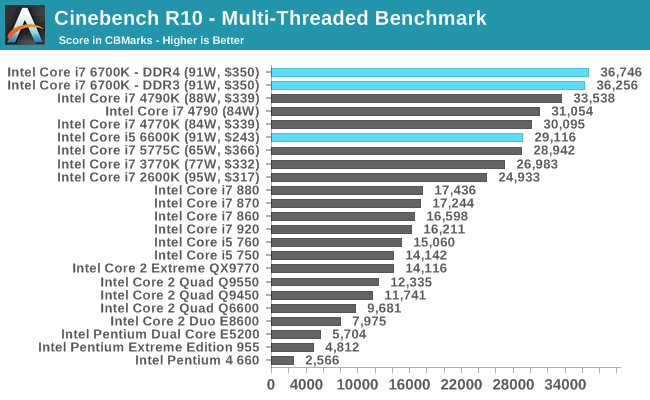


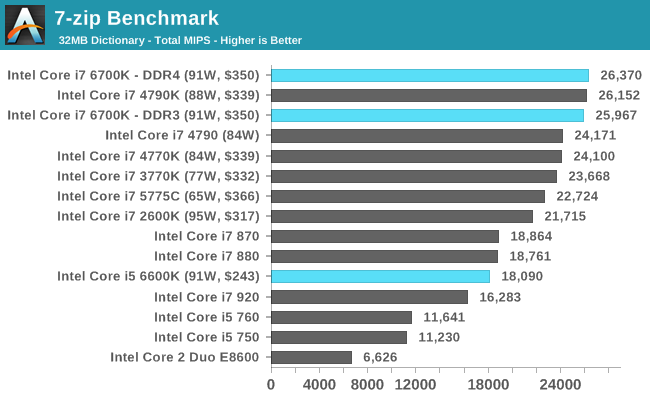
Even with the older tests that might not include any new instruction sets, the Skylake CPUs sit on top of the stack.
Office Performance
The dynamics of CPU Turbo modes, both Intel and AMD, can cause concern during environments with a variable threaded workload. There is also an added issue of the motherboard remaining consistent, depending on how the motherboard manufacturer wants to add in their own boosting technologies over the ones that Intel would prefer they used. In order to remain consistent, we implement an OS-level unique high performance mode on all the CPUs we test which should override any motherboard manufacturer performance mode.
Dolphin Benchmark: link
Many emulators are often bound by single thread CPU performance, and general reports tended to suggest that Haswell provided a significant boost to emulator performance. This benchmark runs a Wii program that raytraces a complex 3D scene inside the Dolphin Wii emulator. Performance on this benchmark is a good proxy of the speed of Dolphin CPU emulation, which is an intensive single core task using most aspects of a CPU. Results are given in minutes, where the Wii itself scores 17.53 minutes.
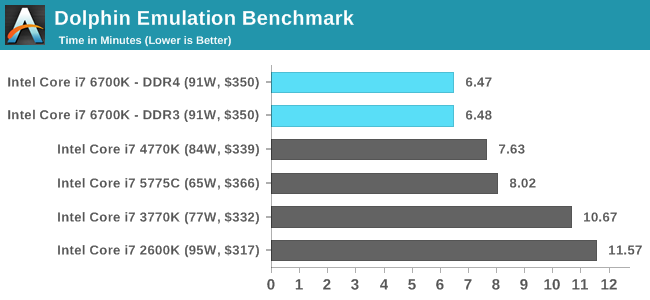
WinRAR 5.0.1: link
Our WinRAR test from 2013 is updated to the latest version of WinRAR at the start of 2014. We compress a set of 2867 files across 320 folders totalling 1.52 GB in size – 95% of these files are small typical website files, and the rest (90% of the size) are small 30 second 720p videos.

3D Particle Movement
3DPM is a self-penned benchmark, taking basic 3D movement algorithms used in Brownian Motion simulations and testing them for speed. High floating point performance, MHz and IPC wins in the single thread version, whereas the multithread version has to handle the threads and loves more cores.
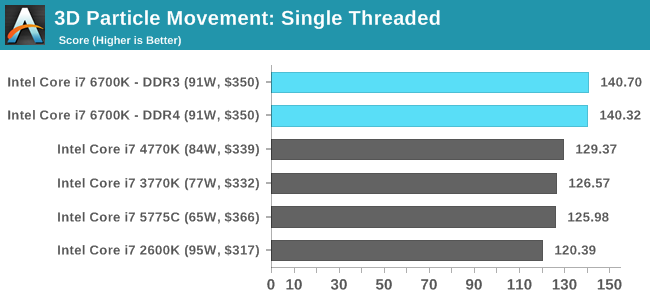
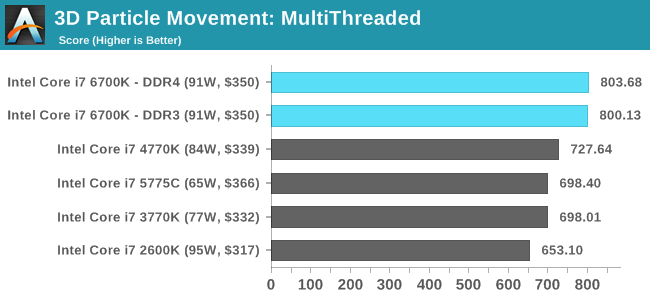
FastStone Image Viewer 4.9
FastStone is the program I use to perform quick or bulk actions on images, such as resizing, adjusting for color and cropping. In our test we take a series of 170 images in various sizes and formats and convert them all into 640x480 .gif files, maintaining the aspect ratio. FastStone does not use multithreading for this test, and results are given in seconds.
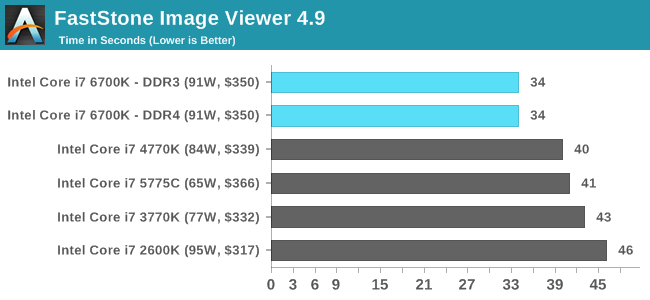
Web Benchmarks
On the lower end processors, general usability is a big factor of experience, especially as we move into the HTML5 era of web browsing. For our web benchmarks, we take four well known tests with Chrome 35 as a consistent browser.
Sunspider 1.0.2
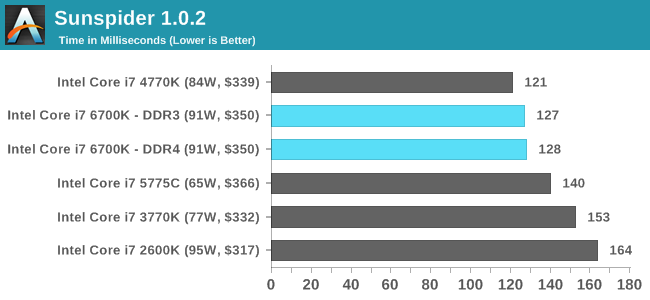
Mozilla Kraken 1.1
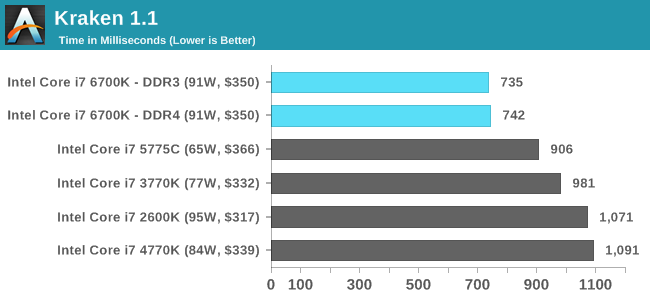
WebXPRT
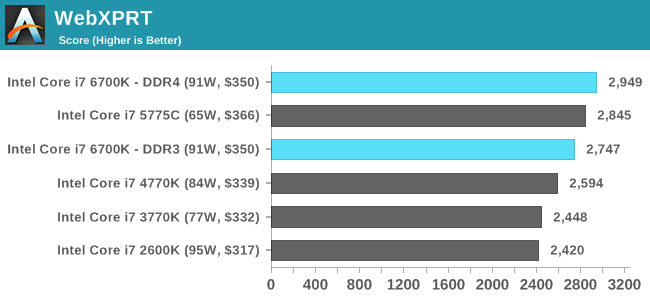
Google Octane v2
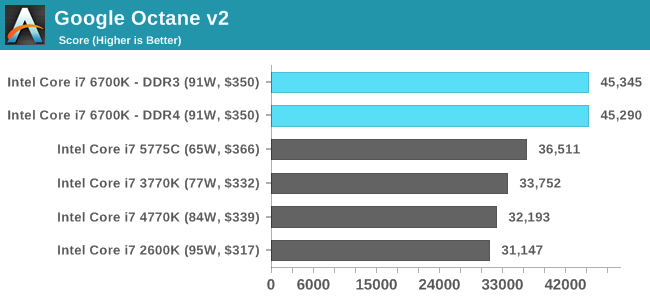










477 Comments
View All Comments
zShowtimez - Wednesday, August 5, 2015 - link
With 0 competition at the high end, its not really a surprise.Refuge - Wednesday, August 5, 2015 - link
^this^darkfalz - Wednesday, August 5, 2015 - link
Yeah, sad. Single digit generational IPC improvements and a trickle up of clockspeed - not exactly exciting times in the CPU world. But I'm kind of happy, in a way, as who wants to have to upgrade their whole system rather than just the GPU every 2 years. It strikes me that Intel are doing a pissload of work for very little results though.wallysb01 - Wednesday, August 5, 2015 - link
What’s lost is that these gains are coming with roughly zero increased power draw. Much of the gains of years past were largely due to being able to increase the power consumption without melting things. Today, we’ve picked all the low hanging fruit in that regard. There is just no point in being disappointed in 5-10% increases in performance, as time moves on its only going to get worse.There is also no point in getting mad at AMD for not providing competition to push intel or at Intel for not pushing themselves enough. If added performance was easy to come by we’d see Intel/AMD or some random start up do it. The market is huge and if Intel could suddenly double performance (or cut power draw in half with the same performance) they would do it. They want you to replace your old Intel machine with a new one just as much as they want to make sure your new computer is Intel rather than AMD.
boeush - Thursday, August 6, 2015 - link
And yet, one would expect much lower operating voltage and/or much higher base clocks with a new architecture on a 14nm process, as compared to the 22nm Haswell. The relatively tiny improvements in everything except iGPU speaks to either misplaced design priorities (i.e. incompetence) or ongoing problems with the 14nm process...Achaios - Wednesday, August 5, 2015 - link
Very often. You are simply NOT a gamer. There are games that depend almost completely on CPU single threaded performance: World of Warcraft, Total War series games, Starcraft II, etc.Nagorak - Wednesday, August 5, 2015 - link
The games you listed aren't ones where I'd think having hundreds of FPS would be necessary.jeffkibuule - Thursday, August 6, 2015 - link
FPS can vary wildly because so many units end up on screen.vdek - Thursday, August 6, 2015 - link
I'm a gamer, I plan a ton of SCII, my Xeon 5650 6 core @ 4.2 ghz does just fine on any of those mentioned games. Why should I upgrade?Kjella - Wednesday, August 5, 2015 - link
Yeah. I upgraded from the i7-860 to the i7-4790K, the only two benchmarks they have in common in Bench suggests that's roughly a 100% upgrade. And a lot of that is the huge boost to base clock on the 4790 vs the 4770, I prefer running things at stock speed since in my experience all computers are a bit unstable and I'd rather not wonder if it's my overclocking..
At this rate it looks like any Sandy Bridge or newer is basically "use it until it breaks", at 5-10% increase/generation there's no point in upgrading for raw performance. 16GB sticks only matter if you want more than 4x8GB RAM. PCIe 3.0 seems plenty fast enough. And while there's a few faster connectors, that's accessories. The biggest change is the SSD and there you can always add an Intel 750 PCIe card instead for state of the art 4x PCIe 3.0 NVME drive. Makes more sense than replacing the system.